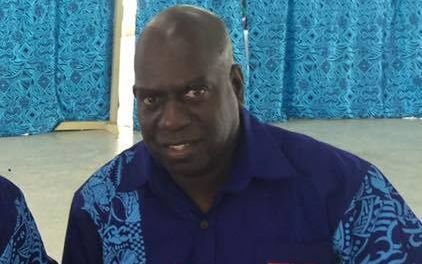HONOLULU, 11 DECEMBER 2018 (PNA) – Electronic monitoring of fishing vessels operating in the Western and Central Pacific Ocean is gaining greater focus following directives by the President of the Federated States of Micronesia and Ministers of the Parties to the Nauru Agreement (PNA) members.
PNA officials recently considered the development of a PNA E-Monitoring Programme at a workshop in Honiara. The results of the Honiara workshop were reported to PNA officials and their Ministers during meetings last week in Honolulu in the lead up to this week’s annual meeting of the Western and Central Pacific Fisheries Commission (WCPFC).
The workshop was a response to both the decision of PNA Ministers to put a priority on developing a PNA E-Monitoring Programme, and to the commitment announced recently by the President of the Federated States of Micronesia, Peter Christian, to 100 percent coverage of longline fishing vessels by electronic monitoring by 2023.In making the commitment, the President challenged other PNA members to meet this same goal through the “Technology for Tuna Transparency (T-3) Challenge.”
“The outcome of the one-day workshop in Honiara was substantive for E-Monitoring development,” said Eugene Pangelinan, Executive Director of the FSM’s National Oceanic Resource Management Authority. Pangelinan noted that The Nature Conservancy (TNC), which has been supporting E-Monitoring trials in the region, has committed funding to assist development of an expanded programme, while additional funding is also being sought.
Electronic Monitoring systems in fisheries use technology including video cameras, remote sensors, satellites, and hard drives installed on fishing boats to provide a range of information, including information on retained and discarded catch. These technologies can be an invaluable tool for providing critical science and compliance data to fisheries managers, but they also support stakeholders throughout seafood supply chains with transparency about on-the-water operations.
In tuna fisheries, gathering information in this way is particularly important in the longline fisheries where the very large number of smaller vessels makes it impossible at this point to achieve the 100 percent coverage by onboard fisheries observers achieved in the purse seine fishery.
The Honiara workshop was funded by TNC and built on the progress made in an E-Monitoring trial in four PNA members — Palau, Federated States of Micronesia, Marshall Islands and Solomon Islands — with TNC support.
During the recent workshop in Honiara, TNC representatives outlined global and regional progress and opportunities in E-Monitoring in fisheries. TNC expressed its continuing support for work on E-Monitoring in the region.
“PNA parties recognize the importance and priority that needs to be attached to the development of E-Monitoring in PNA waters and across the Western and Central Pacific Ocean,” said Ludwig Kumoru, CEO of the PNA. “Substantial progress was made at the workshop on designing a PNA E-Monitoring Programme, including identifying areas where additional work is needed.”
Among priorities identified by PNA is the need for the WCPFC to adopt arrangements for E-Monitoring in the high seas that are compatible with those being adopted by PNA.




